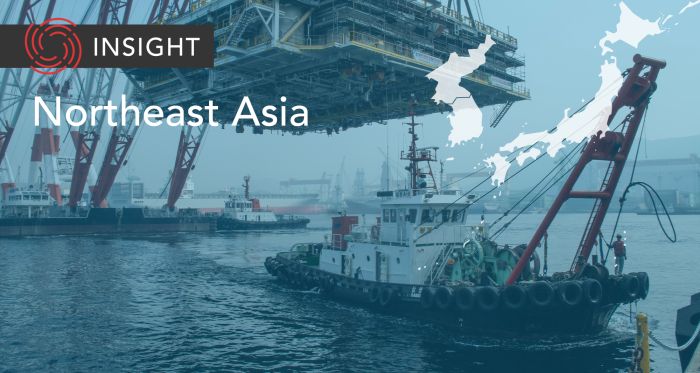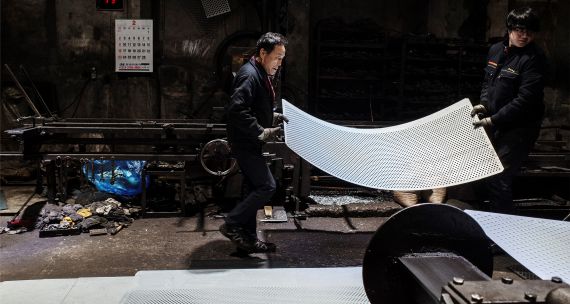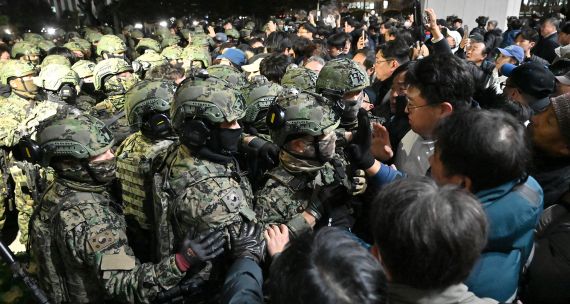The Takeaway
In August, the South Korean Ministry of Trade, Industry and Energy (MOTIE) reported to have mitigated the shipbuilding industry’s labour shortage. Since January, collaborative efforts between government agencies and industry stakeholders, including job training programs and increased visa issuances, attracted about 10,000 migrant workers into the South Korean shipbuilding industry.
In Brief
In the first half of 2023, South Korean shipbuilding exports reached C$12.6 billion (12.3 trillion won), an 11.9 per cent increase from 2022. This increase can be attributed to increased demand and the eased visa requirements for foreign workers, after the Korea Offshore & Shipbuilding Association (KOSHIPA) predicted a labour shortage of 14,000 production workers in the shipbuilding industry by the end of 2023. Instead, 70 per cent of the forecasted shortage was filled by the first half of 2023.
The bold increase in visa quotas to meet the demand and efforts from the government and companies to shorten visa-related administrative procedures helped mitigate the potential challenges of a labour shortage within the shipbuilding industry. To expand the workforce, the government first offered 3,638 low-skilled employment permit (E9) visas to attract foreign workers in the shipbuilding industry, resulting in 3,179 entering South Korea. In the case of the professional employment (E7) visa, the MOTIE and KOSHIPA recommended the employment of a total of 6,282 people, and the Ministry of Justice placed 5,209 of them in the domestic shipbuilding industry.
Companies also stepped in to improve working conditions. For example, HD Hyundai Heavy Industries (HHI) began to provide various welfare benefits, including increased wages, interpretation services, counselling for any grievances, and customized meal programs to help workers adapt to their new environment. And Hanwha Ocean Co. renovated nine dormitories in its Okpo shipyard in South Gyeongsang Province, catering specifically to foreign workers.
These concerted efforts made by different government entities and businesses could serve as models to help resolve labour shortages in other South Korean industries.
Implications
Since 2010, factors such as an industry-wide slump, supply glut, and the mismanagement of companies led to large-scale layoffs and pay cuts, intensifying the labour shortage in South Korea’s shipbuilding industry. But advancements in technology and a shift towards building environmentally friendly vessels signalled a recovery in the industry. In 2021, South Korean shipbuilding companies received the largest number of orders in eight years for their “high value-added" vessels (i.e. vessels equipped with advanced technology and features), driving economic and operational gains. And in the first half of 2023, South Korea’s ship orders accounted for 29 per cent of global orders, ranking first in the world for high value-added and eco-friendly vehicles.
However, these developments made the domestic labour shortage challenging for the industry. Combined with larger societal issues of low birthrates, harsh working conditions, and an aging population, the Ministry of Justice recognized that the labour shortage issue was not limited to the shipbuilding industry but included other key industries related to helping sustain South Korea’s competitiveness in the global market.
Consequently, in August, the ministry announced plans to ease strict visa regulations, facilitating the entry of skilled foreign workers. The main goal is to increase the E7 visa quota, which was only 2,000 in 2022, to 35,000 in 2023. Other general labour shortage mitigation steps include:
- bringing in foreign housekeepers for new couples;
- allowing the conversion of visas for skilled professionals;
- nurturing young talent by increasing the number of international students at South Korean universities, and;
- establishing a comprehensive oversight body to effectively manage the labour shortage and immigration policies.
What's Next
- Improved immigration policy and social integration
In July, the Ministry of Finance announced that it would explore ways to accept more foreign workers to address the country’s low birthrates and labour shortages. The government also plans to unveil an immigration policy towards the end of 2023. These measures reflect South Korea’s commitment to overcoming demographic challenges and maintaining its position as a global economic powerhouse while providing a new roadmap for immigration into South Korea, which will help alleviate domestic concerns. However, South Korea should consider the potential social and cultural challenges that come with increased immigration.
- Language barriers
Many foreign workers face difficulties communicating with their South Korean counterparts. There have previously been cases of foreign workers walking off the job without notification. More direct engagement with foreign workers and discussions on their experiences will be needed to provide solutions for language and cultural barriers to mitigate further conflicts.
- Preparing the shipbuilding industry for the future
In July, unionized shipbuilding workers cautiously urged the South Korean government and shipbuilding companies to focus on attracting young, skilled workers through higher salaries, rather than relying on relatively low-paid migrant workers. This came after the Korea Enterprises Federation requested the government to lower the minimum wage for migrant shipbuilding workers, presenting problems in the industry regarding wages, labour rights, and working conditions for both domestic and foreign labourers.
- Regional collaboration for shared challenges
South Korea and Japan both face similar challenges on migrant labour and immigration policies. This situation may pave the way for collaborative efforts, enabling the two countries to exchange knowledge and insights on these issues.
• Produced by CAST's Northeast Asia team: Dr. Scott Harrison (Senior Program Manager); Momo Sakudo (Analyst); Tae Yeon Eom (Analyst); and Sue Jeong (Analyst).




